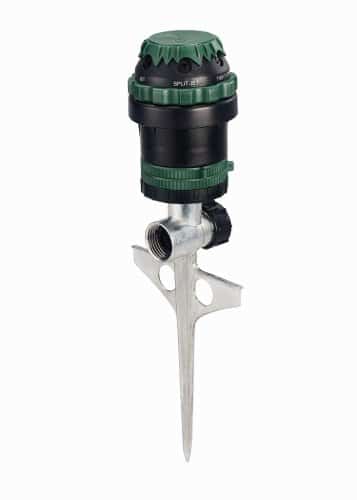Welcome to the world of Thai Chili Pepper Plants, where heat meets sweetness in the most delightful way! If you’re a chili pepper lover looking to add some spice to your gardening adventures, then growing Thai Chili Pepper Plants is a must-try. These vibrant plants, also known as Capsicum annuum ‘Bird’s Eye’, produce flavorful fruits that start off green and ripen to a captivating red color.
Thai Chili Pepper Plants are a popular choice for both their ornamental value and culinary uses. With their thick-walled fruits measuring 1 to 2 inches in length, they offer a Scoville rating of 50,000 to 100,000, providing a good level of heat without overwhelming your taste buds. These peppers bring a unique spiciness to dishes, making them a favorite among chili enthusiasts.
What sets Thai Chili Pepper Plants apart is their adaptability to container gardening, making them suitable for any space, whether you have a sprawling garden or a small balcony. With the right care and attention, you can enjoy a successful cultivation of Thai Chili Pepper Plants right at home.
In this article, we will explore the essential tips and techniques for growing Thai Chili Pepper Plants, including the ideal conditions, planting methods, care requirements, and even how to grow them in containers. Whether you’re a seasoned gardener or just starting out, this comprehensive guide will equip you with the knowledge and confidence to embark on a successful Thai Chili Pepper Plant cultivation journey.
Planting and Care Tips for Thai Chili Pepper Plants
To grow Thai Chili Pepper Plants, there are a few important steps you need to follow. You can choose to either direct sow the seeds in the ground or start seeds indoors. If you decide to direct sow, make sure the soil has warmed up to 60 degrees F. If you prefer starting seeds indoors, do so 8 to 10 weeks before the final frost date.
When selecting a spot for your Thai Chili Pepper Plants, look for an area that receives full sun for at least 6 to 8 hours a day. The soil should be rich and well-draining to provide optimal growing conditions.
When it’s time to transplant your seedlings, space them 1 to 2 feet apart in rows that are 2 to 3 feet apart. This will give them enough room to grow and spread out.
Watering is crucial for the health and growth of your Thai Chili Pepper Plants. Deeply water the plants every two to three days, ensuring the soil remains moist but not waterlogged. These plants thrive in hot sun, so they require a minimum of 6 hours of direct sunlight daily.
To provide the necessary nutrients for your plants, it’s important to fertilize them. About a month after planting, use an NPK 5-10-10 fertilizer to feed the plants. Once the fruits start to set, use a product that includes calcium to promote healthy development. Additionally, avoid nitrogen-rich fertilizers once the plants are established, as they can inhibit fruit production.
Pollination is another important aspect of caring for your Thai Chili Pepper Plants. To ensure proper pollination, attract pollinators to your garden by adding flowers that they find attractive. This will significantly improve fruit production.
When it comes to harvesting, you have the option to pick the peppers when they are green or fully ripe. Green peppers have lower heat levels, while ripe red peppers have a sweeter flavor. Use a snipper to carefully remove the peppers from the plant, as stemless peppers tend to deteriorate quickly. Remember, the harvested peppers will continue to ripen on their own after being picked.
Growing Thai Chili Pepper Plants in Containers
Growing Thai Chili Pepper Plants in containers is a practical and space-saving option for chili pepper enthusiasts with limited garden space. Whether you have a small balcony or a tiny backyard, container gardening allows you to enjoy the bountiful harvest of these spicy peppers. Here’s a step-by-step guide on how to grow Thai Chili Pepper Plants in containers.
- Choose the right container: Select a 15-inch pot with good drainage to ensure excess water can easily escape. This will prevent waterlogged soil, which can lead to root rot. Additionally, ensure the container has enough space for the plant to grow and develop.
- Use quality potting mix: Fill the container with a high-quality potting mix that provides proper aeration and drainage. You can enhance moisture retention by adding perlite, moss, or coconut coir to the mix.
- Plant the seedlings: Place the Thai Chili Pepper plant seedlings in the center of the container at the same level or slightly deeper than they were in their original container. This will promote strong root growth and stability.
- Ensure proper sunlight: Find a sunny location for your container garden where the Thai Chili Pepper Plants can receive full sun throughout the day. This will help the plants thrive and maximize fruit production.
- Water regularly: Potted plants may require more frequent watering compared to plants in the ground. Check the soil moisture regularly and water the plants well. Aim to keep the soil consistently moist but not waterlogged.
- Fertilize appropriately: Once the fruits start to form, fertilize the plants every 4 to 6 weeks with an organic liquid fertilizer. This will provide essential nutrients for healthy growth and abundant fruiting.
- Consider the growing season: Thai Chili Pepper Plants have a long growing season of 100 to 130 days. To ensure a successful harvest, start the seeds indoors 8 to 10 weeks before the final frost date. Then, transplant the seedlings into containers once they are bigger.
- Transplant if needed: If the weather is warm enough and your container plants outgrow their original pots, you can transplant them into larger containers or directly into the garden. However, make sure the weather conditions are suitable for transplanting.
Container gardening for Thai Chili Pepper Plants not only provides a convenient solution for limited space but also allows you to easily move the containers to optimize sunlight exposure or protect the plants from extreme weather conditions. With the right care and proper container setup, you can enjoy a successful harvest of homegrown Thai Chili Peppers that add a fiery kick to your dishes.
If you’re curious to learn more about Thai Chili Pepper Plants or need guidance for planting and care, continue reading the next sections of this article.
Conclusion
Growing Thai Chili Pepper Plants can be a rewarding and enjoyable experience for chili pepper enthusiasts. By following the proper planting and care tips outlined in this article, you can successfully cultivate these hot and flavorful peppers in your very own home garden.
Whether you choose to grow Thai Chili Pepper Plants in containers or in the ground, providing them with the right amount of sunlight, water, and nutrients is key to ensuring their vibrant growth and a bountiful harvest. Remember to handle the peppers with care, wearing gloves when necessary to protect your skin from the spicy oils they contain.
With their unique flavors and spiciness, Thai Chili Pepper Plants are a great addition to a variety of dishes. From adding a kick to your favorite recipes to creating homemade hot sauces, these peppers offer a versatile and delicious heat that will impress your taste buds.
So why not give it a try? Start your own Thai Chili Pepper Plant garden today and enjoy the satisfaction of growing your own spicy and flavorful peppers.
Will Creeping Thyme Growth Affect the Growth of Thai Chili Pepper Plants?
Creeping thyme is a quick-spreading ground cover, and understanding how fast creeping thyme grows is key to garden harmony. This plant can outpace neighboring flora’s expansion, potentially encroaching upon Thai chili pepper plants. Competitive for sunlight and nutrients, creeping thyme’s rapid growth may inhibit the peppers’ development without careful management.










